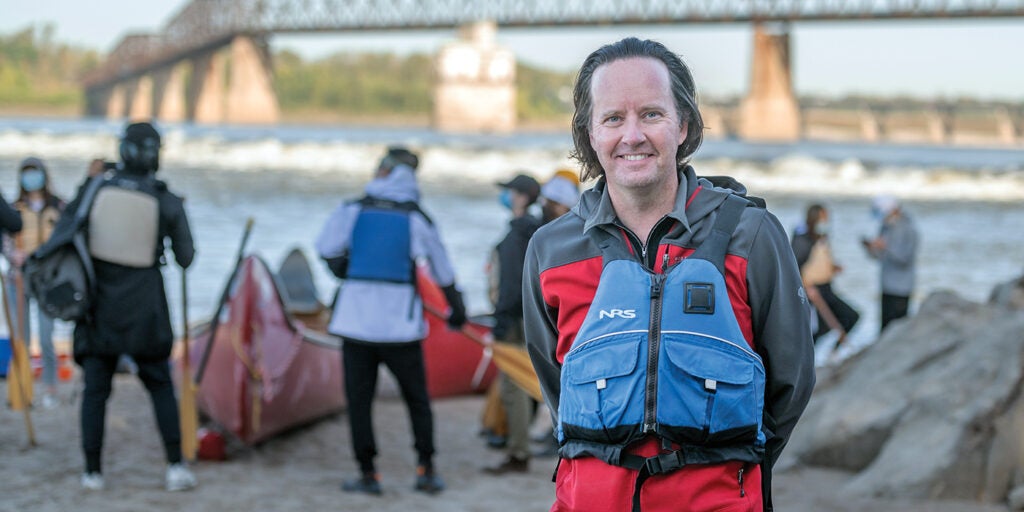The effects of climate change cannot be handled piecemeal, argues Derek Hoeferlin. Managing 21st-century waterways will require coordination on a continental scale — and a foundational understanding of how water shapes our environment.
From headwaters near Salem, Missouri, the Meramec River snakes 218 free-flowing miles, through 14 counties and scores of towns, skirting St. Louis before emptying into the mighty Mississippi.
Derek Hoeferlin grew up outside St. Louis, on a wooded hill close to the Meramec. As he commuted to school along Interstate 44, he’d cross the river and its sprawling floodplain twice or more each day.
“It’s always mesmerized me,” Hoeferlin recalls. “Something about its meandering made me daydream. Rivers don’t give a damn about north or south, east or west — or interstates for that matter. Water flows where water wants to flow.”
Today Hoeferlin is a licensed architect and chair of both landscape architecture and urban design programs in the Sam Fox School of Design & Visual Arts. In many ways, rivers have become his life’s work. But the daydreams are tempered by a growing sense of urgency.
Architecture is facing a series of very complex global issues. And that’s made me really question my own role. What are the ethics of building near water? What is the ethical response to something like Hurricane Katrina? To the impact of climate change in general?
Derek Hoeferlin
The ‘lawless stream’
In North America, no system is larger or more complex than the Mississippi River basin. Measuring more than 1,245,000 square miles, the basin encompasses 31 states and portions of two Canadian provinces. At its center flows the Mississippi itself — the “lawless stream,” in Mark Twain’s famous phrase, that can be neither curbed nor confined.
